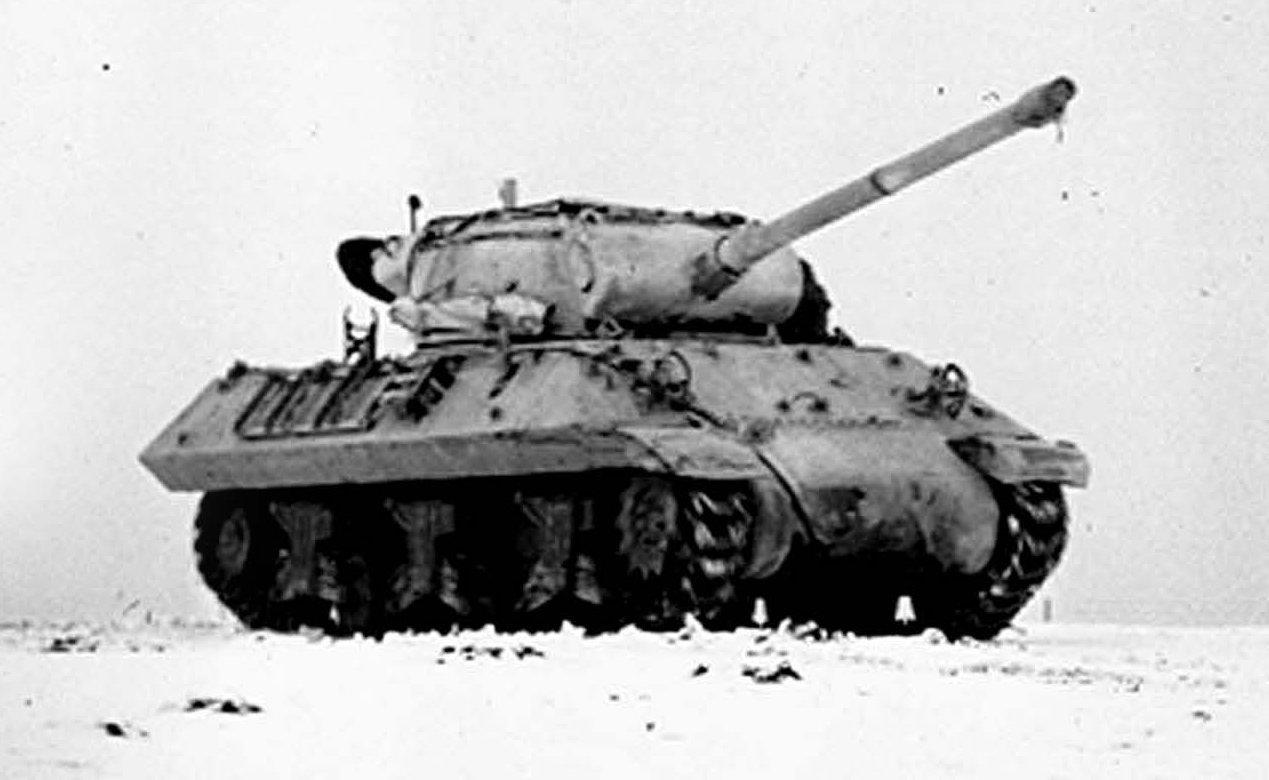War Thunder M36 Slugger
With the advent of heavy German armor such as the Panther and Tiger, the standard U.S. tank destroyer, the 3in Gun Motor Carriage M10, was rapidly becoming obsolete, because its main armament, the 3in M7 gun, had difficulty engaging these new tanks past 500 metres. This was foreseen, however, and in September 1942 American engineers had begun designing a new tank destroyer armed with the M3 90 mm gun.
Con l’avvento di corazzati pesanti tedeschi, come il Panther e Tiger, il cacciacarri standard degli Stati Uniti, il 3inch Gun Motor Carriage M10, divenne rapidamente obsoleto, perché il suo armamento principale, il 3in pistola M7, aveva difficoltà a penetrare i carri nemici oltre i 500 metri. Questo era stato previsto e nel settembre del 1942 ingegneri americani aveva iniziato la progettazione di un nuovo cacciacarri armato di M3 90mm
The first M36 prototype was completed in March 1943, with a new turret mounting the 90 mm M3 gun on a standard M10 chassis. After testing, an order for 500 was issued. The prototype was designated T71 Gun Motor Carriage; upon standardization the designation was changed to 90 mm Gun Motor Carriage M36 in June 1944.
Il primo prototipo di M36 venne completato nel marzo 1943 con il montaggio di una nuova torretta armata di 90 millimetri M3 su un telaio M10. Dopo la prova, un ordine per 500 carri venne emesso. Il prototipo fu designato come T71 Gun Motor Carriage; con la standardizzazione la denominazione cambiò in 90 mm Gun Motor Carriage M36 (giugno del 1944).
Like all US tank destroyers, the turret was open-topped to save weight and provide better observation. Postwar, a folding armored roof kit was developed to provide some protection from shell fragments, as with the M10. The M36 had a large bustle at the rear of its turret which provided a counterweight for the main gun. Eleven additional rounds of ammunition were stored inside the counterweight.
Come tutti i cacciacarri americani, la torretta era aperta per risparmiare peso e fornire una migliore osservazione. Nel dopoguerra, venne sviluppato un kit con copertura corazzata per fornire una certa protezione da schegge di poreittili, come per l’M10. La M36 aveva un grande contrappeso sul retro della sua torretta per il peso del cannone principale. Undici proiettili supplementari vennero stivati all’interno del contrappeso.
Source –
testi: http://en.wikipedia.org/wiki/M36_tank_destroyer
Immagini: http://en.wikipedia.org/wiki/M36_tank_destroyer and http://warthunder.com/en/devblog/current/772





